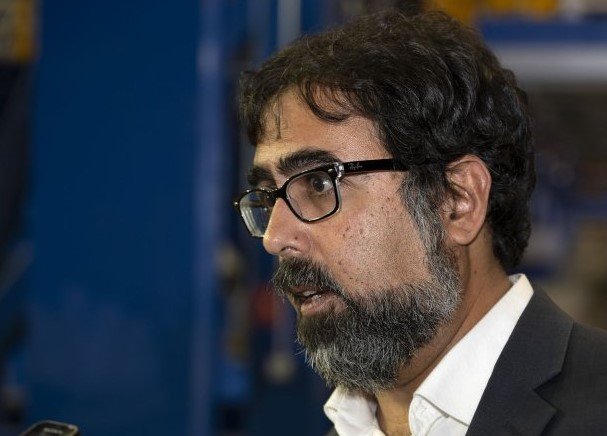Indian American engineer Amit Kshatriya, a veteran at NASA for two decades, has been elevated to the agency’s highest civil service position. His appointment comes at a defining moment for U.S. space ambitions, with Washington tying national pride and global competitiveness to the Moon and Mars.
A Historic Appointment at a Crucial Time
NASA confirmed Kshatriya’s promotion late Wednesday, with Acting Administrator Sean P. Duffy praising his leadership and technical expertise. The role of associate administrator is considered the agency’s most senior civil service post, sitting just below the political appointees who rotate with each administration.
Duffy emphasized that the decision reflects both trust in Kshatriya’s capabilities and the White House’s desire to place exploration at the heart of American policy. “Amit has spent more than two decades as a dedicated public servant at NASA, working to advance American leadership in space,” Duffy said. “Under his leadership, the agency will chart a bold vision to return to the Moon during President Trump’s term.”
The announcement coincided with renewed calls in Washington to accelerate Artemis launches, particularly crewed missions aimed at establishing a sustained presence on the lunar surface before the decade’s end.
From Wisconsin to Mission Control
Kshatriya’s personal story reflects the arc of American immigration and aspiration. Born in Wisconsin to Indian parents, he studied mathematics at Caltech before completing advanced work in aerospace engineering at the University of Texas at Austin.

His early career saw him step into the nerve center of U.S. spaceflight—Mission Control in Houston. He is one of only about 100 people in NASA history to hold the title of flight director, the individual who carries ultimate responsibility during crewed operations.
That experience forged his reputation for calm under pressure. Colleagues say his style is less about grandstanding and more about meticulous attention to detail. “When Amit was in the chair, you knew every angle had been thought through,” said one former colleague, describing tense simulation drills during the shuttle era.
Artemis, Mars, and the Trump Era
Kshatriya’s promotion isn’t just about personal achievement—it highlights the strategic direction of U.S. space policy. The Artemis program, long delayed, is central to President Trump’s second-term agenda. The administration wants to put “American boots” back on the Moon before rivals like China secure a strong foothold.
This has several implications:
-
Lunar landings are meant to serve as a testbed for future human missions to Mars.
-
Partnerships with commercial companies like SpaceX and Blue Origin will be expanded to lower costs and speed up timelines.
-
The U.S. aims to present itself as the global leader in deep-space exploration, rallying allies while countering Beijing’s ambitions.
Kshatriya’s background—both operational and strategic—positions him as a steady hand for this ambitious roadmap.
Balancing Science, Politics, and Industry
The associate administrator role is often described as part scientist, part diplomat, part negotiator. Kshatriya will need to keep Artemis schedules on track while ensuring safety, coordinating budgets, and navigating competing priorities inside the federal government.
And then there’s the private sector. NASA has increasingly leaned on companies to design landers, cargo ships, and rockets. The agency doesn’t just buy services anymore—it nurtures a commercial ecosystem. “The appointment underscores how Washington views space as an economic engine,” noted Duffy.
That balancing act is complex. A table of upcoming challenges shows the scale of the work ahead:
| Challenge | Timeline | Key Stakeholders |
|---|---|---|
| Artemis III crewed landing | 2027 target | SpaceX, international partners |
| Lunar Gateway station modules | Mid-2026 | Lockheed Martin, ESA, JAXA |
| Mars mission planning | 2030s | U.S. Congress, private sector |
| Budget negotiations | Annual | White House, lawmakers |
Each item represents not just a technical hurdle but a political battle. Success will depend on his ability to keep multiple constituencies aligned.
Recognition and Influence
Over his career, Kshatriya has collected honors including NASA’s Outstanding Leadership Medal, a recognition rarely handed out. But peers say what sets him apart isn’t medals, it’s the way he blends technical expertise with humility.
“He’s not the loudest voice in the room,” said a retired shuttle commander. “But people listen when he talks, because his advice is grounded in deep knowledge.”
That demeanor could prove valuable in a Washington climate where political appointees often clash with career technocrats. By most accounts, Kshatriya has built trust on both sides.
A Symbol for Indian Americans
His appointment also resonates beyond the space community. For many in the Indian American diaspora, Kshatriya’s rise to NASA’s top civil service role is a moment of pride. The community, already prominent in medicine, technology, and finance, now sees one of its own shaping humanity’s path to another world.
Social media quickly lit up with congratulatory messages. Indian newspapers ran headlines celebrating “NASA’s Indian Star,” while academics pointed to his success as a signal for young students of immigrant backgrounds.
In India, where Prime Minister Narendra Modi has pushed hard for an expanded space program through ISRO, the symbolism won’t go unnoticed. The fact that a son of Indian heritage is now central to America’s space push could deepen both admiration and competitive spirit.
What Lies Ahead
The Artemis missions are expected to dominate headlines over the next few years, but Mars remains the ultimate target. Kshatriya has been at the center of “Moon to Mars” planning for years, working to map out everything from crew rotations to spacecraft refueling depots.
Now, he must turn those ideas into reality. Success or failure will define not just his legacy but the credibility of America’s claim to be the leader in space exploration.
For NASA staff, the mood is cautiously optimistic. “He’s one of us,” said one engineer. “He knows what it’s like to sit in mission control at 2 a.m. with a decision that could mean life or death for astronauts. That’s the kind of perspective we need at the top.”
